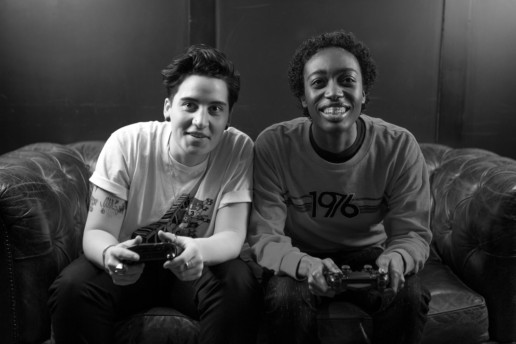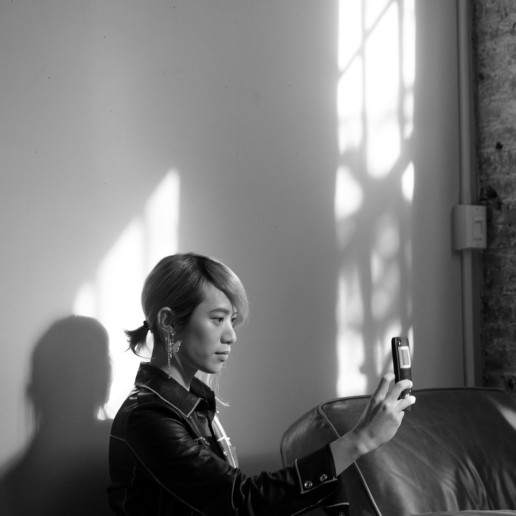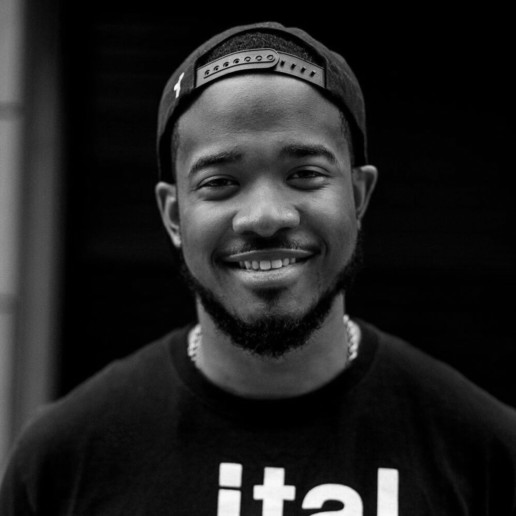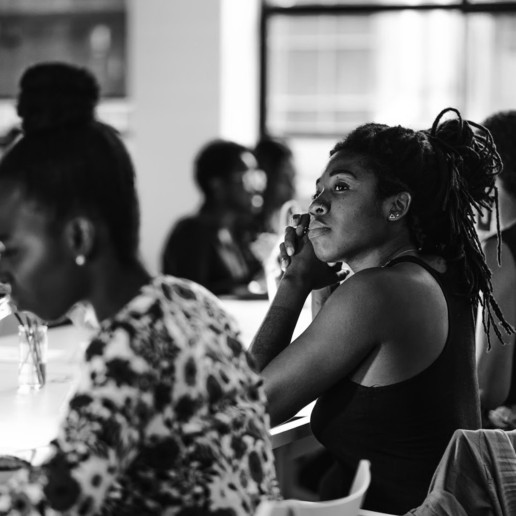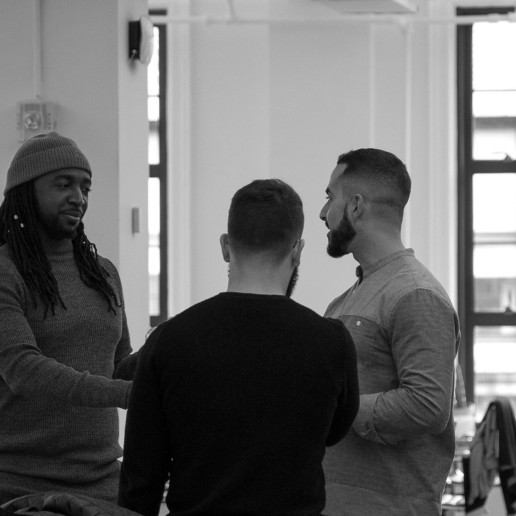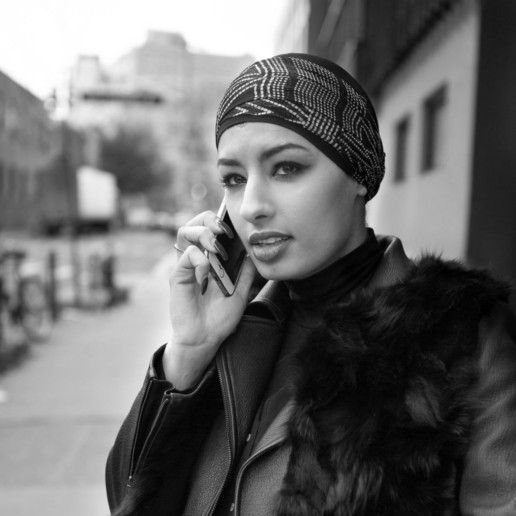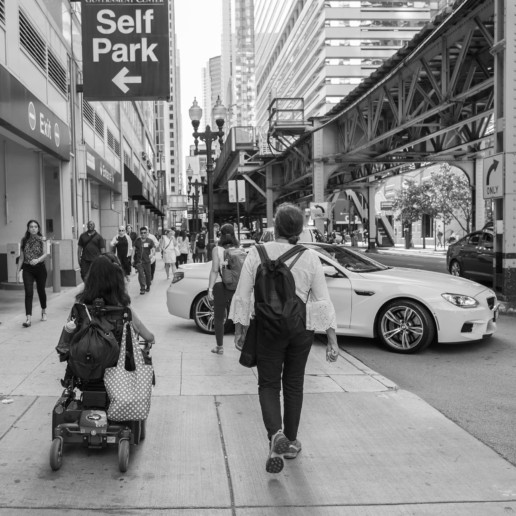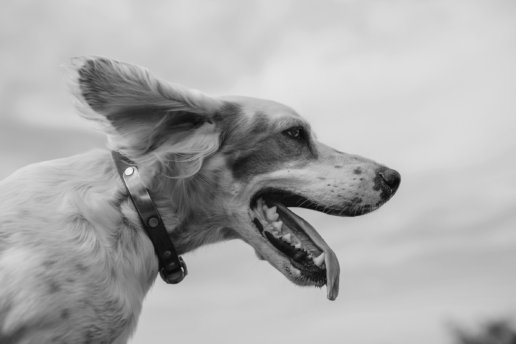The digital creative
Converging disciplines.
A question you might have had, whether interviewing for a role, growing your team or personally contributing: how do user experience responsibilities overlap with those of a creative director? And subsequently, is the user experience practice limited to digital or does it venture into traditional terrain as well?
With digital playing a crucial role in nearly every growth and marketing campaign, user experience design is as critical a contribution as traditional creative – visuals and tone – to the success of any initiative.
Design can solve society’s biggest problems … if we cultivate a love of learning through the design process.
David Sherwin
Director of User Experience at lynda.com
Consider the role.
As a creative director, you facilitate all aspects of the creative process. You’re a guide for your team with skills and experience related to design, fine arts, motion graphics, writing and/or other creative industry fields.
In traditional mediums, such as print or television, this means strategic and on-brand use of color, typography, messaging, video, music, imagery, etc. These types of endeavors require a ‘man behind the curtain’ (or a very closely-nit team) making sense of the chaos and ensuring alignment to a shared vision. In total, a creative director’s goal is overseeing all creative deliverables to ensure strategic alignment, proper branding, consistency, and quality.
Not an easy task in itself, but add the mechanics and the interactivity of digital deliverables and diverse channels, like, extended reality, voice interfaces, mobile, desktop, and social, and it’s easy to be overwhelmed.
You don’t have to change who you are. You have to be more of who you are.
Sally Hogshead
New York Times Bestselling Author
Add more to your thinking.
The need for user experience thinking and skill can’t be neglected if you want to create a great product, one you’d want to use. It’s a layer of thinking that’s as important as the strategy, art and writing.
But resources are limited and it’s your responsibility to oversee the overall quality of a campaign; so you need to be a hybrid. And an ever-evolving, curious one. As a digital creative director, you must not leave the user experience to someone else, even if there’s the benefit of having an expert on your team. It’s just another facet of the final product to which you can contribute.
Principles of user experience design will benefit more than just your digital deliverables. This mindset will challenge you to consider your campaign from your audience’s perspective. You’ll more deeply consider how each tactic is connected to the next and how to ensure that each has the desired outcome, similar to a path-to-purchase in traditional shopper marketing.
Adopting these principles, you’ll approach the campaign as an interconnected journey, not just a creatively consistent one.
Those who learned to collaborate and improvise most effectively have prevailed.
Charles Darwin
Bring them together.
Of course, having (or acquiring) user experience expertise doesn’t eliminate the need for a diverse team with their own unique specialities. Differing points of view and areas of focus only make the work better and from collaboration comes the best results. So it’s important to acknowledge where your contributions are best and most efficiently applied based on your team.
But by adopting user experience into your personal skill set, you’ll better adapt to the team’s abilities and fill any gaps. Even better, when you apply your new thinking more broadly, your work will be more than a cohesive campaign; it will be an interconnected experience.
Inclusive by design
Diversity is a start.
Inclusivity is the goal.
Many places I’ve worked are striving for diversity. They have initiatives for employees, like LGBTQ-ally programs and minority workshops. And formal – and informal – incentives for hiring “diverse” candidates. That’s a good start.
But if I’m being honest, there’s not been any that have felt effortlessly and authentically inclusive – at least for not more than a few moments. But when those moments happen – or when you visit an office where there’s an easy atmosphere of all people feeling valued, heard and respected with the same access to the same opportunities – it’s magic. And you don’t know what you’re missing until you’ve witnessed it.
As employees in tech, we have to make an effort to foster an inclusive culture and model the behavior we hope to see in others. We need to encourage the shift from outdated paradigms. And – especially as designers – we need to wield our unique power and strive to be inclusive in our work that’s experienced by so many.
By no means exhaustive, but here’s some things I keep in mind …
Seek diverse points-of-view
Hear people out
Embrace the the unfamiliar
Be curious and ask questions
Avoid stereotypes
And represent everyone in the work (some resources below)
Make your work more inclusive.
The Gender Spectrum Collection is a stock photo library featuring images of trans and non-binary models that go beyond the clichés. This collection aims to help media better represent members of these communities as people not necessarily defined by their gender identities—people with careers, relationships, talents, passions, and home lives.
Humaaans is a free library of mix-&-match illustrations. You can customize people’s positions, clothing, colors and hairstyle to create some unique, inclusive scenes. Rotate and position the elements in your humaaans however you like. They’re like legos made out of flesh … and vectors. And add backgrounds to make them your own.
Nappy provides beautiful, high-res photos of black and brown people to startups, brands, agencies, and everyone else. It’s easy for companies to be purposeful about representation in their designs, presentations, and advertisements. And the images aren’t generic like a lot of stock photography, so it’s easy to be inclusive and authentic.
Jopwell’s smaller selection of photography features diverse coworkers in an office setting. The first collection is live and that there’s a first collection, we might hope that additional ones are to follow. Making use of the photos is free with a visible attribution to Jopwell.
A nicely curated selection of Muslim women found on Getty Images. You’ll find photos of Muslim women in casual and professional settings. While a few images may read a little too “stock” overall there’s a nice selection.
Getty Images partnered with Verizon Media and the National Disability Leadership Alliance to create a growing collection of images that break stereotypes and more authentically portray individuals with disabilities. The collections works with contributors to expand and grow it over time.
Made with emotion
I get so emotional.
It’s probably not something an ad has often led you to say to yourself. Even the ones that attempt to speak to the softer side, sometimes with heart wrenching stories, can fall flat or, even worse, elicit derision.
If an ad for animal welfare, for example, fails to connect, how can one for technology? Soda? Lawyers? Lumber?
Well, they can, with authenticity and the will to do so. Whether it’s exhilaration, empathy, empowerment or admiration, you should be looking to establish a connection through emotion. And as advertising is increasingly digital, inherently presenting a barrier of sterility, it’s an important that emotion isn’t ignored.
When it works, it works well.
It’s not new. And when done right, it’s memorable and effective. The best ads sell more than a product, they sell a feeling or an idea. They show empathy for your audience. Business objectives must be met, but connecting through emotion ensures success.
You must consider your audience’s motivations and desires in tandem with your brand’s personality and objectives when seeking to create an emotional connection.
How does your audience feel when they see this?
What will they remember?
Why should they feel anything?
Is this authentic?
And are you eliciting the right emotion(s) for your brand?
By making an emotional connection, you’ll not only sell a product or service once, you’ll take a step towards establishing a lasting relationship.

